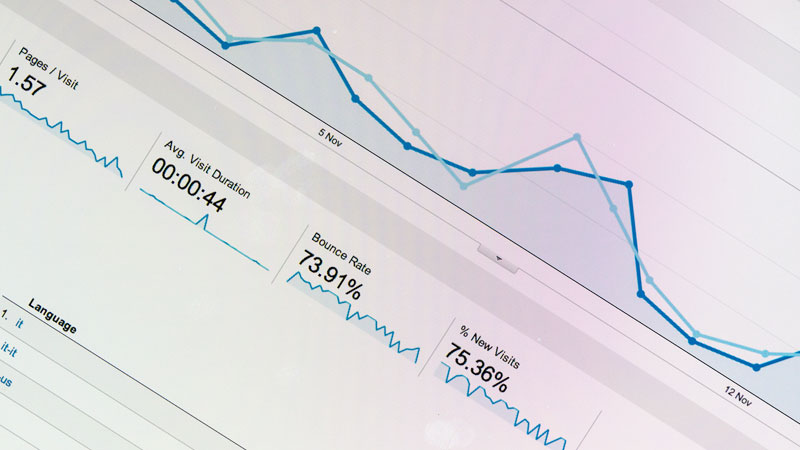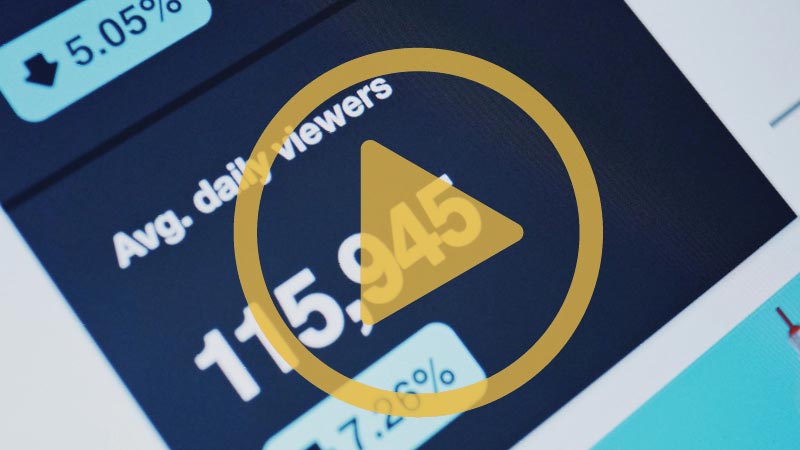Google Analytics (GA) is the de facto leader of web analytics, with one estimate pegging the number of websites using GA for site tracking at over 27 million. The product has virtually defined the language used in the field of web analytics, while also borrowing ideas from other competent tools like Adobe Analytics. An executive running any business today cannot afford to be unaware of the terms used in this domain. Understanding the correct meaning of Google Analytics key performance indicators (KPIs), as well as web KPIs bandied about more generally, is foundational to the development of a sound marketing strategy.

In this short article, we’ll attempt to clear up confusion around the three most common web analytics KPIs that have often confounded marketers.
1. Users or Visitors
The most common questions or misconceptions related to this metric are:
a. It is the number of people landing on my website?
b. Why does the sum of daily visitors seem higher than what GA reports?
c. Will a user landing on the site after clicking on a promotional email be counted twice if she revisits the site from a social post?
Yes, this simple concept of a user can quickly transcend into a complex idea involving cookies, devices, browsers and logins. For GA, a user is identified by cookies stored on their device, and the cookies are tied to specific browsers used by the visitor. So, if I visit care.com using the Chrome web browser on my laptop, GA will count me as a single user. However, if I revisit the site using an iPhone’s Safari web browser, I’ll be counted again. In today’s multidevice usage, this is a common scenario that one must account for while analyzing data. If your site has a login functionality, multiple sessions across devices and/or browsers can be grouped together through the User-ID feature provided by GA. Talk to your analytics team about this option.
While looking at data over multiple days, you’ll notice the sum of individual days does not match the overall number reported by Google. That’s because of the uniqueness aspect of this metric. Users viewing your site twice over two different days in a week will show up only once in the total reported by GA. When I visit wikipedia.com on every day of the week, it counts me as a single visitor for each day. But in a weekly report, I’ll show up only once, not seven times, as that would be a different interpretation of reality.
Lastly, as long as I’m using the same device and browser, GA will identify me as the same user irrespective of the channel I’m using. I can click on a link in the newsletter or a social post and GA will seamlessly weave my journey together as one user with multiple traffic sources and pageviews.
2. Bounce Rate
Bounce rate is one of the Google Analytics KPIs you’ll hear about most often. A user lands on the site, doesn’t interact, and leaves. That’s a bounce. Divide that by total sessions, and that gives you the bounce rate.
What one needs to be aware of here is the definition of “interaction.” GA allows site owners to define it to suit their needs. A click on another page on the site is a definite sign of interaction and is taken as the default. However, that’s fairly basic. For a client at Pace, we decided to use scroll and time as measures of interaction. A visitor crossing a certain threshold of time on the page or scrolling through half the page was taken as someone who has interacted with the site. The number of bounces and corresponding bounce rates are thus dependent on how we define interaction.
Sometimes you may be interested in looking at bounce rates at a page level, say, for comparing content performance across your blog posts. A word of caution here: Just be mindful that a bounce is only defined for Entrance pages, i.e., pages that form the beginning of a session of a user’s journey on the site. If you encounter a page with a high bounce rate, look at the number of entrances as well to see if there’s any reason for alarm.
Also note, this definition of interaction also impacts how time spent on a page is calculated. You can read all about it here.
3. Conversion Rate
a. Step 1: Define Conversion and set it as a Goal in GA. It can be a purchase, a video view, a link click, a report download, a certain number of pageviews — essentially, any action of value that your business is hoping the site visitors will perform.
b. Step 2: GA tells you your site’s conversion rate. Simple. Maybe too simple.
Google assumes that you’re interested in learning about conversions in each session, not for each visitor. For some, this default calculation can work, but it isn’t true for most businesses. For a client interested in learning about leads generated through their content program, this was a problem, as GA’s default Conversion Rate was underreporting the program’s success. GA doesn’t provide a way to use alternate definitions of Conversion Rates in its default reports. We solved for that by tweaking our custom dashboards in Tableau to always calculate the rate by dividing goal conversions by unique users and not sessions.
Don’t let the default GA take anything away from the success of your program. Talk to your analysts about whether they are accounting for this.
Google Analytics is a magnificent tool that tells us so much about how our digital marketing efforts are working. Interpreting the myriad dimensions and metrics of GA can be a challenge, and knowing some of the basics mentioned here can help you in making sense of more complicated KPIs, in Google Analytics or another tool.
Ready to use this knowledge for discovering more insights? Take a look at this post from Nicole Martin on how to do that.



